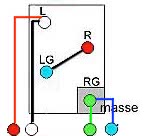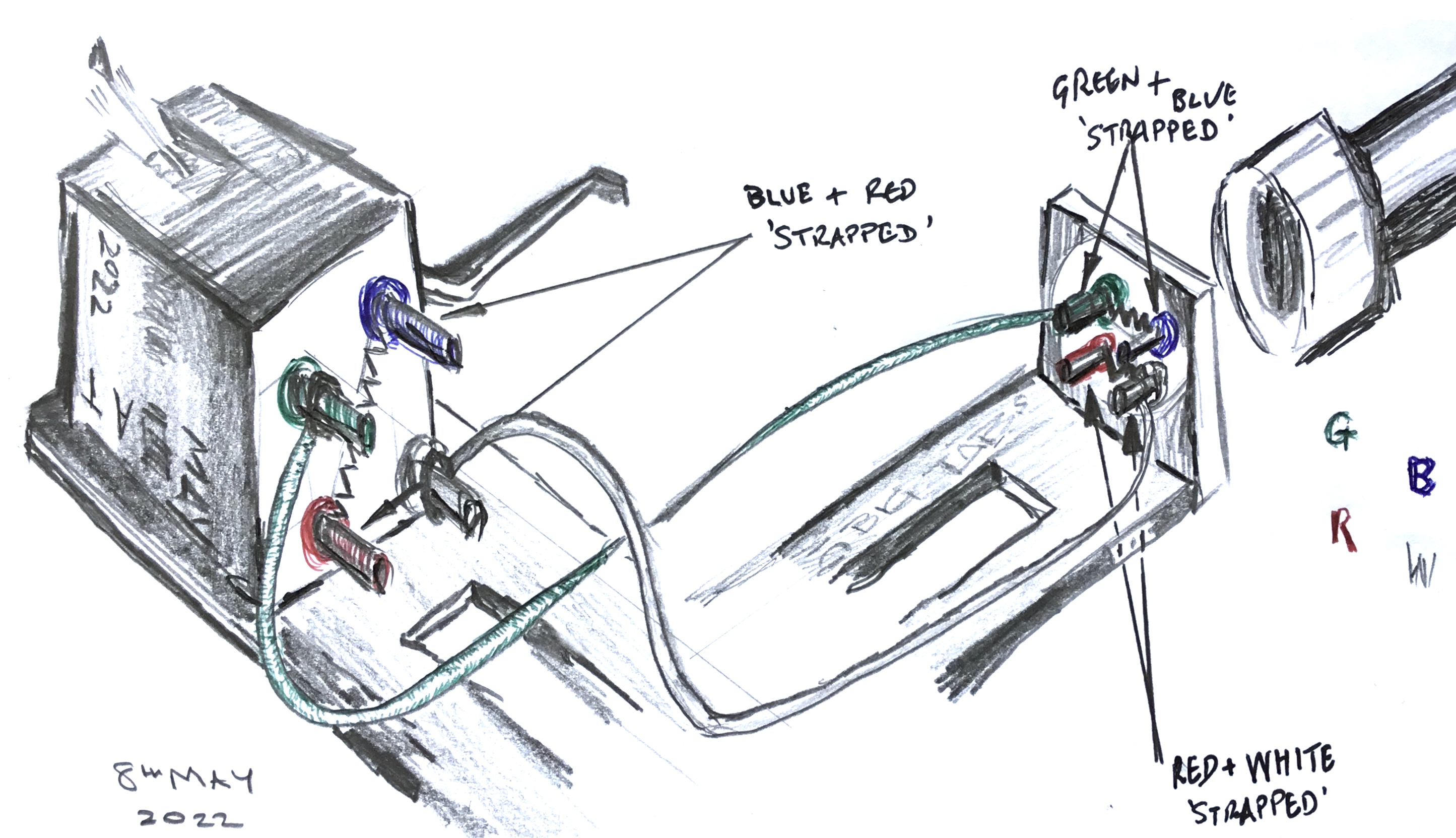Big Tabs
looking backwards, going forwards
I was just editing my previous post when you posted yours.
Have another read of mine. It's a bit wordy but I hope mostly jargon free.
Here's an updated diagram. White lead is black so that it is visible. Just ignore the word 'masse', French for 'mass', in this case a reference to green being also connected to the cartridge shield as part of the design. Yes, I stole this from the ancient Shure Bros. Francophone text instructions for model SC35C.

I have put the Sex Pistols on, now it is Round (?) #7 playing with stuff I barely understand.
See what I can break this time (lots of tags snapped off the cartridge connecting wires, I have ordered more to ruin )
First job - make a drawing plan.

